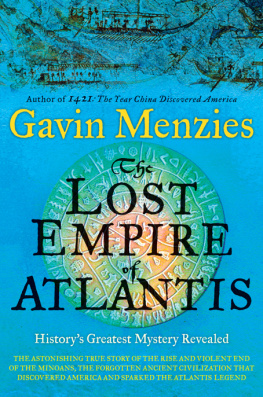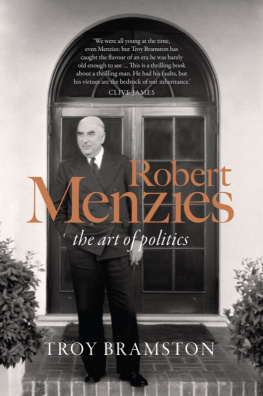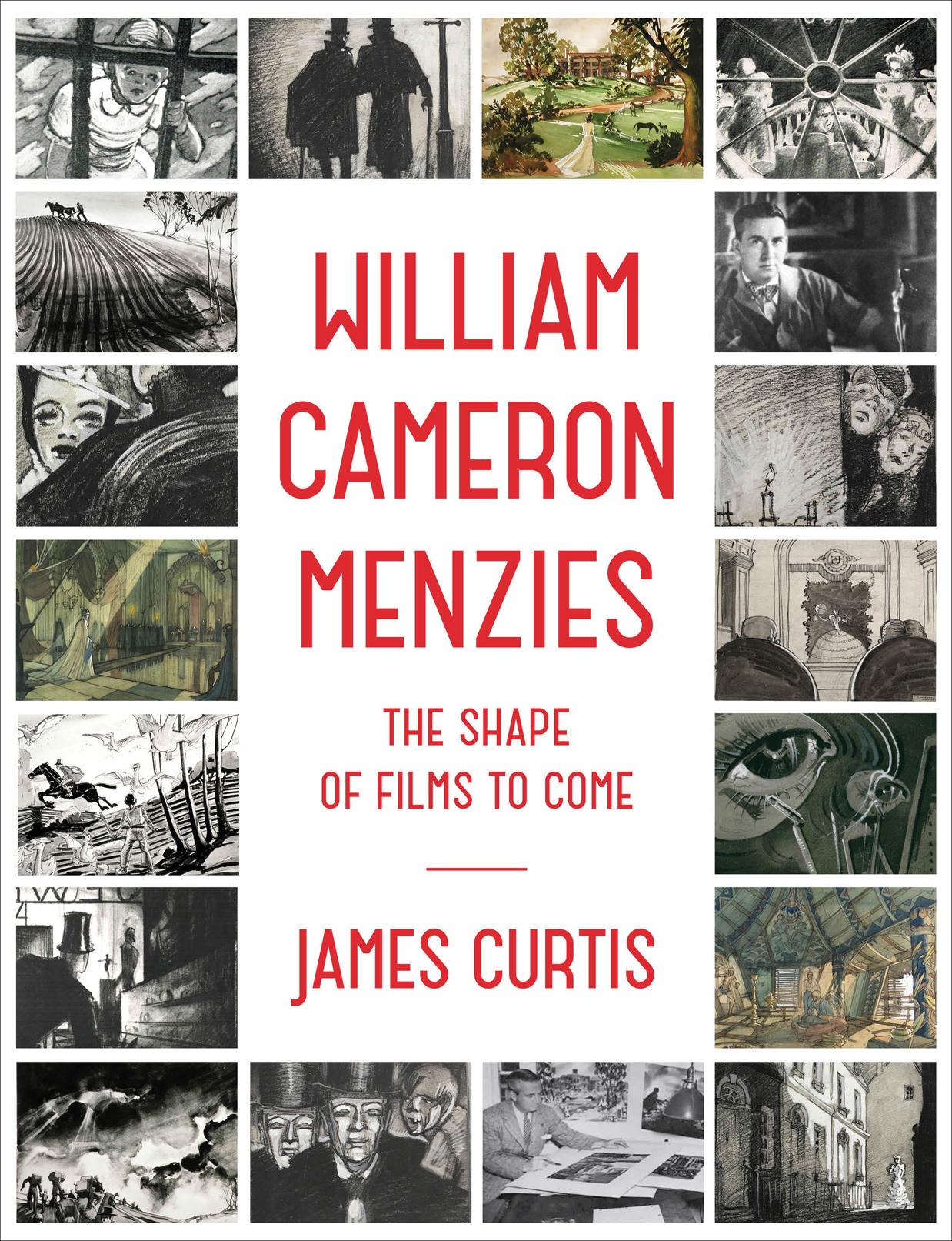William Cameron Menzies poses with artwork developed for The Devil and Miss Jones, 1941. ( MENZIES FAMILY COLLECTION )


Copyright 2015 by James Curtis
All rights reserved.
Published in the United States by Pantheon Books, a division of Penguin Random House LLC, New York, and distributed in Canada by Random House of Canada, a division of Penguin Random House Ltd., Toronto.
Pantheon Books and colophon are registered trademarks of Penguin Random House LLC.
Library of Congress Cataloging-in-Publication Data
Curtis, James.
William Cameron Menzies : the shape of films to come / James Curtis.
pages cm
Includes bibliographical references and index.
Includes filmography.
ISBN 978-0-375-42472-4 (hardcover : alk. paper). ISBN 978-1-101-87067-9 (eBook).
1. Menzies, William Cameron, 18961957. 2. Motion picture art directorsUnited StatesBiography. 3. Set designersUnited StatesBiography. 4. Motion picture producers and directorsUnited StatesBiography. I. Title.
PN 1998.3. M 4645 C 88 2015 791.43025092dc23 [B] 2015011482
eBook ISBN9781101870679
www.pantheonbooks.com
Cover image sources include: the Menzies Family Collection; the David O. Selznick Collection at the Harry Ransom Center, the University of Texas at Austin; the New York Public Library; and two private collections
Cover design by Janet Hansen
Book design by Soonyoung Kwon, adapted for eBook
v4.1
a
For Pamela Lauesen and Toby Antles,
without whom this book could not have been written,
and in memory of Suzanne Menzies Antles
CONTENTS
INTRODUCTION
He Loved Doing the Job
Richard Sylbert was on the line. Used to expressing himself in bold lines and stark imagery, he was recalling the first time he met William Cameron Menzies. It was at the Hotel Westbury on Madison Avenue, near the Carlyle. In his hotel room. I remember what he was wearing, how he looked. He was the same height as my father, and he dressed the way his pictures looked. In other words, he was silver-haired. No, not silversteel-haired. You know? And he wore his uniform; I had mine, even in those days, and he always had his, which was gray tweed, gray flannel, black shoes, black tie, white button-down shirt, black pullover sweater. He looked like a black-and-white image.
The year was 1952, and Menzies had come to New York to make the pilot for a TV series based on the Fu Manchu stories of Sax Rohmer. Sylbert, at age twenty-three, was already the veteran of more than a hundred telecasts. Bill was my first mentor, he said. He was the director; I was the designer which is not a bad way to start. We got along beautifully. Unfortunately, he died five years later. He died at sixtyhe was very youngand he was a terrific guy. Hes very important in the field of motion picture design; maybe the most important. Did you ever read that letter Orson Welles wrote? Hes not just the father of production design, hes the only one who ever did it in his own time. Anton Grot got reasonably close, but nobody has ever repeated what Menzies did. You couldnt do it, meaning you couldnt have control over Sam Woodwho, as Menzies said, didnt know where to put the camera anywayand draw all the shots for him. Theres no director alive today who would do that.
Along with Ken Adam, who also worked with Menzies at the beginning of his career, Dick Sylbert was probably the most influential of all modern production designers. I had asked the Society of Motion Picture and Television Art Directors how to reach him, and Karen Jacobsen, a tremendous help, gave me the Palm Desert number of Sylberts agent, Phyllis Rab. I called on a chilly Tuesday morning in January of 2001 and left a message. Within half an hour, Sylbert was back to me.
I suggested that Menzies was one of the great unsung figures of motion picture history. Oh he was sung, Sylbert responded in his native Brooklynese, but he was overshadowed by the credit mongers like Cedric Gibbons who worked for the major studios and called themselves supervising art directors and didnt do a fucking thing. When Gibbons died, he had a thousand credits. He had thirty-nine nominations and eleven Oscars. When William Cameron Menzies died, he had one Oscar. The difference between production design and bullshitting is right there.
I hadnt asked about Cedric Gibbons, the autocratic enforcer of the gloss long associated with Metro-Goldwyn-Mayer, but Sylbert scarcely needed prompting. The matter of Gibbons was particularly vexing because he knew that in nearly forty years of designing for the screen, Gibbons saw to it that Menzies never worked at M-G-M. Do you know that people wouldnt make a movie until they got Menzies? Thats how powerful he was at one time. Alexander Korda, when he was making Thief of Bagdad, got the actor he wanted, got the director he wanted, because Menzies was going to do the picture. And you know Menzies got credit on it, but Vincent Korda took over because Menzies was still busy with Gone With the Wind and [he] got screwed out of both of them. Korda got a nomination for The Thief of Bagdad, and Lyle Wheeler, another phony, got an Oscar for Gone With the Wind. And all Menzies got was a stupid little plaque.
He didnt want to play the game. He used to say to me, Those fucking stock clerks out in California Theyd go to the stock bins and pull out scenery, because they used to have huge sets standing at all the studios. And he was the only one who never became a supervising art director because he wanted to do the job. These guys didnt do the job; they talked about it. Some of them were quite interesting; Grot was interesting, and [department head] Hans Dreier over at Paramount was interesting, and Richard Day [at 20th Century-Fox] would try to be a working designer, but how can you be a designer if youre doing twenty-five pictures a year? Youd need roller skates.
So they didnt do the job. Menzies wanted to do the job, because Menzies whole interest was as a dramatist, not a designer, in the sense of an art director, as they called these guys. He wanted to do the job. You couldnt do the job if you were running a studio. You just came in in the morning. It was so disgraceful. Gibbons had a heart attack in the mid-forties, showed up occasionally in the next ten years, and got two more Oscars! Because Louis B. Mayer and he set it upthey institutionalized credit stealing. M-G-M and Fox were the biggest studios, so they always got the most votes. No matter how you cut the pie up, Anton Grot I dont think ever won an Oscar. So you can imagine what the game was. The game was: Ill vote for the guys who can give me a job. And thats what happened for forty years. So the decent men like Menzies and Grot and Dick Day, who was between them, got shut out.























